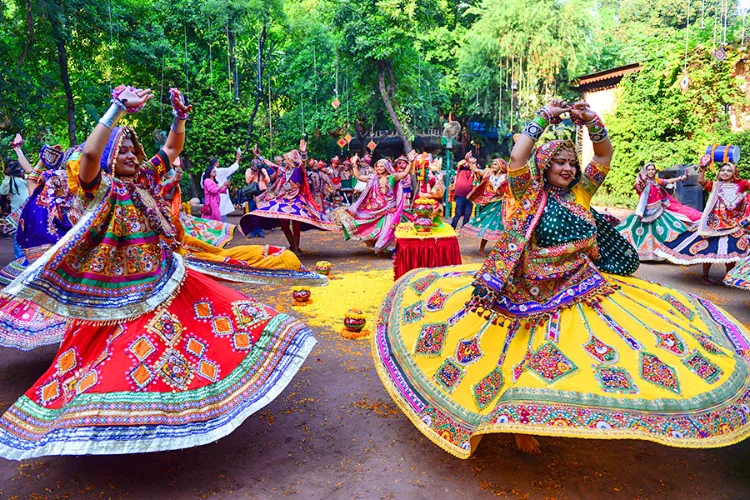
Sumana Mukherjee / New Delhi
Gujarat, situated in the western part of the Indian sub-continent, is famous for its festivity, scenic beauty, food and rich cultural heritage.
Gujarat’s most famous traditional dance known as Garba has added some extra mileages to its legacy.
The dance form originated in the villages of Gujarat, where it was (and continues to be) performed in communal gathering spaces in the villages with the entire community participating. As with many social events that happen in rural areas, garba also has religious significance.
Garba is performed during Navratri, the longest and largest dance festival in the world.
Navratri, literally meaning "nine nights," is the Hindu festival dedicated to Durga—the feminine form of divinity and her nine forms,
This festival is observed in many ways, each unique to the region of India in which it is celebrated. In Gujarat, it is observed with nine nights of dancing as a form of admiration and worship.
Starting in the evening, men and women dance late into the night in honour of Durga. Many people also fast or observe a special diet with restricted foods during these nine days and nights. Garba is central to Navratri observances in Gujarat, it is not exclusively performed only during Navratri. Garba also is performed during social events such as weddings and parties.
The word Garba comes from the Sanskrit word Garbha which means womb and so implies pregnancy that stands for the new beginning — life.
Garba is a dance that honors, worships, and celebrates the feminine form of divinity. The dance is performed by women in a circle around a clay lantern with a light inside, called a Garbha deep or womb lamp
The Garbha deep has another symbolic interpretation. The vessel itself is a symbol of the body, within whom divinity (in the form of the Goddess or Devi) resides. Garba is danced around this symbol to honor the fact that all humans have the divine energy of Devi within them.
As Garba is part of a religious practice, like other Hindu rituals and worship, it is done barefoot. Going barefoot signifies respect for the earth upon which people walk. The foot is the body part that touches the earth – the sacred mother of all. Foot is thought of as the conduit through which the vital energy of the earth travels through humans. Dancing barefoot is another way to connect with Devi.
Most interesting part is the colourful costume of Garba festival The traditional clothing of the Garba dancer is red, pink, yellow, orange, and brightly colored Chanya, choli or Ghagra, Choli and Dupatta, with bandhani and big mirrors)or with thick Gujarati borders.
They also wear heavy jewellery, such as necklaces, sparkling bangles, waist belts, and long oxidized earrings. Traditionally men wear an ethnic kedia and a pajama or a dhoti with an oxidized bracelet and necklace. the dandiya sticks are Wooden.
Prime Minister Narendra Modi congratulated the nation on the on the global recognition of Garba. He expressed his happiness saying that Garba is a celebration of life, culture and devotion.
Garba is a celebration of life, culture and devotion. It also brings people together. It is gladdening to note that Garba’s global popularity on the rise!
— Narendra Modi (@narendramodi) March 27, 2024
Sometime ago, Garba found a place in the @UNESCO Intangible Cultural Heritage list. I am glad that the Certificate of… pic.twitter.com/h5gmEFZsWn
